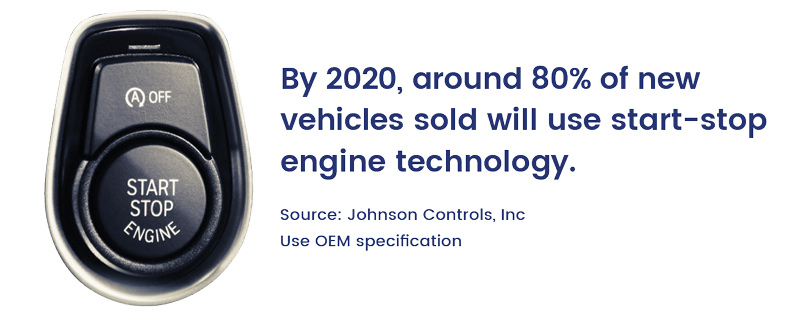Battery Care & Maintenance
Looking over your battery for any wear or feeling a sluggish start can be a tell-tale sign you may need to check all connection, condition of the leads and charge rate if all is OK you may need a new battery.
- Keep your battery charged
- Learn how to charge a car battery. You can use a special charger to keep your battery fully charged. Charged batteries keep the internal chemical balance in-check, reducing battery wear. ATOMIC Battery technician will advise you.
- Keep electrolyte levels topped up where applicable. All ATOMIC Batteries are maintenance Free and do not require to be topped up.
- If you have a maintenance-free battery there’s no need to check fluid levels. Low-maintenance batteries need their levels checked regularly, regardless of the battery type.
- Refit battery heat shields after a new battery has been installed.
- Battery shields protect your battery from heat. Excessive heat leads to overheating and swelling thus, shortens battery life
- Turn off all lights before you leave the car.
- Clean battery terminals and remove any build-up from the outside.
- Inspect your battery for any leaks, bulging or cracks
- If you’ve no obvious reason for the battery to go flat, it’s time to get a new battery. Consult your technician or ATOMIC Battery Service for advice
How to install battery?
Before commencing ensure correct PPE (Personal Protective Equipment) are worn at all time, this should include safety glasses, appropriate clothing, gloves
Ensure the vehicle is in a safe location before you start avoid replacing the battery on the roadside
Always refer to the Vehicles Owner’s Manual before commencing
Check you have the correct battery for the vehicle this should include correct height for appropriate bonnet clearance and OEM spec for the vehicle
Always use an approved Memory Minder, Connect the Memory Minder before disconnecting battery cables. (this will help avoid loss of radio codes and other key vehicle data)
Identify the location of positive terminal (RED) and mark polarity on positive cable.
Remove the negative (-) terminal first.
Remove the positive (+) terminal.
Remove hold down clamp and safely remove the battery from the vehicle.
Inspect the battery tray for corrosion. If needed, dust off area or clean the area with a water and baking soda mix and rinse with water.
Both Terminals should be cleaned. If terminals are badly corroded they should be replaced.
Place the new battery in the tray, ensure the battery is sitting level and the terminal post are on the correct side (in the same position as the old battery)
Where applicable always install the old heat shield back around the new battery.
Refit the Battery hold down clamp and ensure the battery is secure and cannot move in the tray.
First replace the positive cable and tighten.
Replace the Negative cable and tighten (negative cable must always be replaced last)
Do not over tighten terminals or hammer terminals onto battery post, this can cause damage to the battery post and battery internal components, hence, void the warranty
Start-Stop Technology
Stop-Start vehicles place increased loads on the battery and electrical system. A conventional battery isn’t designed to cope with these higher demands and will fail as a result.
Atomic Batteries carry AGM and EFB batteries for stop-start vehicles. These batteries are designed to handle the rigours associated with constant stop start demands, rapid recharging and the power requirements needed to run electrical accessories while the engine is switched off. They’re also required to deliver the necessary power to start the engine when the brake is released.
Starts vehicle on average every 1 to 2 kilometres
Battery operates in partial state of charge
Accessories draw from battery when engine is off
Rapidly recharges battery in-between engine on/off cycles

Starts vehicle on average twice a day
Maintains battery in a close to full state of charge
Accessories draw from a fully charged battery
Recharges battery using alternator over duration of journey
Warranty
Here at Atomic Batteries we are dedicated to providing motorists with reliable battery solutions to increase the useful lives of their batteries and reduce total vehicle running costs.
Our batteries are produced and tested against stringent quality standards.
If your battery is found to be defective in material or workmanship (and not merely discharged/flat) during the period specified below, Atomic Batteries will provide a replacement battery free of charge.
This warranty does not cover batteries that fail due to improper charging, incorrect fitment, broken containers, damage caused by fire, excessive heat, wreckage, explosion, freezing, damage caused by abuse, neglect, vehicle not driven for prolong period of time or the use of special additives introduced to the battery.
Premium battery range used for private use - 24 Months
Heavy Duty battery range used for private use - 18 Months
AGM / EFB battery range used for private use - 24 Months
All batteries used in a commercial vehicle (other than taxis, limousines or courier vehicles) fitment or application - up to 18 Months
All batteries fitted to courier vehicle - 6 Months
All batteries fitted to taxis and limousines - 3 Months
To make a warranty claim, you will need to take the defective battery to your place of purchase or to a designated stockist. Please note that your warranty claim can not be validated without proof of purchase (e.g. original purchase invoice).
The warranty period on an Atomic battery commences from the original purchase date. To validate the purchase date for warranty we prefer to view the original receipt. Alternatively, call us on 0508 422 883 with the battery’s sticker date code.
12 months warranty applies to Motorcycles & Deep Cycle batteries.
6 months applies to Courier Vehicles, Heavy Vehicle and Agricultural Applications.
A commercial vehicle is any vehicle identified on the Department of Transport’s check registration status web service as a commercial vehicle and/or used for the provision of providing good or services on a commercial basis. Examples include but are not limited to: trucks, buses, trades utes or vans, rental, hire, government and driving school vehicles, and vehicles with commercial signage. Vehicles used or partly used for commercial ride-sharing services are commercial vehicles.
The benefits given to you by this warranty are in addition to other rights and remedies you have in relation to the goods to which this warranty relates.
Our goods come with guarantees that cannot be excluded under the New Zealand Consumer Law. You are entitled to a replacement or refund for a major failure and for compensation for any other reasonably foreseeable loss or damage. You are also entitled to have the goods repaired or replaced if the goods fail to be of acceptable quality and the failure does not amount to a major failure.
To care for your new battery:
Have the charge rate checked during every major service. Under and overcharging will reduce your battery’s life.
When your vehicle is driven infrequently or only in short trips it is likely that the battery will gradually discharge. In these circumstances it is advised to charge your vehicle battery regularly. A battery maintenance charger can be used to keep the battery in optimum capacity.
FAQs
Yes. Depending on the type of battery you buy and its application, you’ll get 3 months- 24 months New Zealand wide warranty.
How long a battery lasts depends on:
Correct /proper installation.
The climate in which the car operates.
Maintenance of State of Charge of the battery.
How regularly and the distance the car is driven on daily basis.
How regularly the battery and car are maintained.
Performance of the charging system of the car.
All ATOMIC batteries are guaranteed for the term of the warranty providing you properly maintain your battery and regularly use your vehicle. Read our battery terms & conditions.
CCA stands for Cold Cranking Amps and is the recognised industry standard for rating the cranking ability of a battery. The number of plates was once used as the measure for rating batteries, however, CCA is now the industry standard. It is calculated on the sum of total surface area of the plates in the battery
The Amp Hour (Ah) rating is a way of describing capacity of a battery. It describes the capacity of a battery based on amps a battery can deliver on a discharge consistently for period of 20 hours.
Vehicles are equipped with Battery Management Systems (BMS) which require new batteries to be registered with the system. In most instances, A Batteries technicians will perform this registration on applicable vehicles. Failing to register the battery can result in compromising the life of your battery and in some cases pre-mature battery failure. Failing to register the battery to your vehicle will void warranty.
Follow our tips on how to use a car battery charger:
Check your battery for wear and tear and physical damage and check the battery fluid is topped up where applicable. If the battery is damaged – DO NOT Charge the battery
Use correct charger for your battery type. Identify your battery type and you’ll know what battery charger to get. Ensure it is a 7-stage charger for best result. ATOMIC Battery Service technician can help with this.
Turn off all load (electrics) and keep the battery charger turned off when connecting the charger.
Follow the manufacturer instructions. Even if you’ve charged a battery before, follow the instructions to keep everyone safe.
For safety reasons ensure that the charger is used away from the elements of the weather.
Once the charger is connected it can take up to 12 hours to fully charge a flat battery. It is important that you recharge your battery every time it has gone flat due to some load left on.
Keep your battery charged
Learn how to charge a car battery. You can use a special charger to keep your battery fully charged. Charged batteries keep the internal chemical balance in-check, reducing battery wear. ATOMIC Battery technician will advise you.
Keep electrolyte levels topped up where applicable. All ATOMIC Batteries are maintenance Free and do not require to be topped up.
If you have a maintenance-free battery there’s no need to check fluid levels. Low-maintenance batteries need their levels checked regularly, regardless of the battery type.
Refit battery heat shields after a new battery has been installed.
Battery shields protect your battery from heat. Excessive heat leads to overheating and swelling thus, shortens battery life
Turn off all lights before you leave the car.
Clean battery terminals and remove any build-up from the outside.
Inspect your battery for any leaks, bulging or cracks
If you’ve no obvious reason for the battery to go flat, it’s time to get a new battery. Consult your technician or ATOMIC Battery Service for advice
Car batteries can look good on the outside, but what’s going on inside can be a different story. Looking over your battery for any wear or feeling a sluggish start can be a tell-tale sign you may need to check all connection, condition of the leads and charge rate if all is OK you may need a new battery.
Normal driving will not restore the battery to a reliable level of charge. Instead, it should be recharged using a suitable multi - stage battery charger. Allow up to 12 hours for a flat battery to recharge. It is important to identify the reason for the battery to go flat. Getting the battery checked and diagnosed will help to determine if the battery is faulty.
Sulphation is the chemical reaction between the sulphuric acid and the lead plates within a battery. When a battery is left discharged for a prolong period of time, ‘sulphate’ crystals form on the plates, which reduces the capacity of the battery and the ability to crank the motor. Batteries kept in a poor state of charge will form ‘hard’ sulphation – this causes permanent irretrievable damage and can void your warranty. To reduce sulphation, fully recharge the battery as soon as possible after it is discharged.
Our Batteries
Find my battery
Vehicle fitments may vary. The featured battery prices are an estimate based on the information provided.




